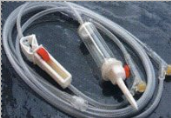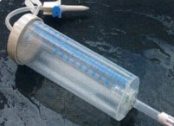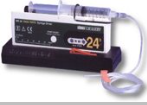Fluid therapy
1/12
There's no tags or description
Looks like no tags are added yet.
Name | Mastery | Learn | Test | Matching | Spaced |
|---|
No study sessions yet.
13 Terms
What is the normal blood volume of dogs and cats and how much of the body weight is water?
Dog - 88ml/kg
Cat - 66ml/kg
2/3 bodyweight is water
List the aims of fluid therapy
maintain normal physiology
improve organ function
correct electrolyte disturbances
correction of hypovolaemia
correction of acid:base disturbances
What is the fluid maintenance rate for animals?
2.5ml/kg/hour or 60ml/kg/day
What are the available crystalloid
Isotonic = good for shock. diuresis and anaesthesia maintenance. Hartmanns.
Hypotonic = saline, can include glucose
Hypertonic = draws water from intestinal space (most common in large animal e.g. colic surgery)
What are the available colloids. Compare to crystalloids.
Artificial = gelatins (largest volume expansion, shortest halflife), dextrans, starches, HBOCs
Natural = albumin, plasma
Supports circulation longer than crystalloids, but no evidence of clinical superiority
Have a more rapid initial re-expansion of volume
What are the natural colloids available?
whole blood
packed red blood cells
fresh frozen plasma/frozen plasma
cryoprecipitate
Match the fluid to the loss
List the routes of fluid therapy (6)
Intravenous
Oral
Rectal
Subcutaneous
Intraosseous
Intraperitoneal

What is this? What is the delivery rate.
Giving set (gives 15/20 drops per ml)

What is this? What is the delivery rate.
Burette. 60 drops per ml (more accurate)

What is this?
Syringe driver
At what rate should fluid loss be replaced in acute and chronic conditions?
Acute = replace half loss in first 1-2 hours, then the rest over 24-48 hours
Chronic = replace over 3-4 days
Contraindications of fluid therapy during anaesthesia
Risk of overload (cardiac patient)
Risk of anaphylactoid reactions and interference with clotting test (colloid)
Cost
What is the normal dose rate for IV crystalloids?
Cats = 3-9ml/kg/hour
Dog = 5-20/ml/kg/hour